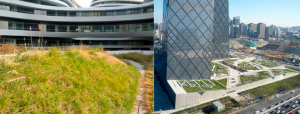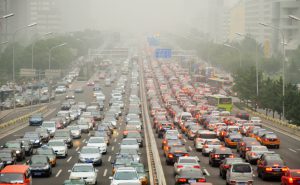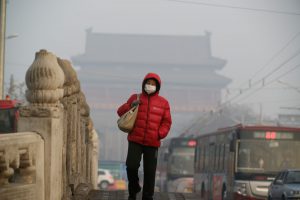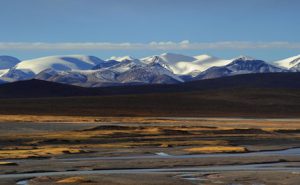China’s Urban Billion
by Tom Miller
Zed Books, 2012
Early on in his well-researched book, Tom Miller, the managing editor of China Economic Quarterly, lays out the scale of the problem confronting the country in which he has lived for over a decade. In 1980, fewer than 200 million of China’s people lived in towns and cities. But just 30 years later, an additional 500 million – the equivalent of the combined populations of the US, UK, France and Italy – had upped sticks and left the countryside for the big smoke.
There are many issues associated with what this book’s subtitle declares “the biggest migration in human history”. For starters, people aren’t just relocating to pre-existing cities. They’ve been moving to an ever-growing number of brand-new ones, built both to stimulate and meet demand. Since the 1980s, China has covered an area the size of Switzerland in concrete and asphalt, expanding its urban area more than fourfold.
This land hasn’t just materialised from nowhere. Around 200,000 hectares are “requisitioned” from farmers each year, leaving some 3 million farmers landless and causing mass civil unrest. Miller cites Sun Liping of Tsinghua University, who estimates that there were a staggering 180,000 “mass incidents” in 2010, covering everything from street fights to protests. An estimated 60% of these “mass incidents” were a result of land requisitions.
The cities replacing these farmlands are inefficiently designed, Miller argues, marked by urban sprawl and vast, wide road networks. And so a country that must feed one-fifth of the world’s population with 7% of its arable land is “using its most precious resource – land – far less efficiently than it needs to,” he writes. “Policy makers fear that the loss of farmland could eventually threaten food security.” Even former premier Wen Jiabao agreed, saying in 2011 that China had “lowered the costs of industrialisation and urbanisation by sacrificing farmers’ rights to land”.
These aren’t the only rights that the rural poor have sacrificed in their search for a better life. Under China’s household registration system, known as the hukou, migrant workers are legally bound to their rural home even after they have moved to the city. As a result they lead segregated lives, unable properly to become part of the cities they live and work in and rarely entitled to public welfare and social security, which most city governments only make available to those with an urban residents permit. So they work without subsidised healthcare or state education for their children, aware that they will get no unemployment benefit should they lose their jobs.
Yet despite all these privations, most feel it is worth the pain, for they can still earn as much in a month as a farmer can earn in year. Miller exhaustively reports the many moves afoot to reform this system, which for 30 years, he says, “has allowed China to industrialise on the cheap”. Yet he worries these reforms are too slow and piecemeal to have the desired effect. The risk is that unless something changes fast, China will see its cities turn into the slums that blight much of the rest of the developing world’s urban centres, from Delhi to Manila.
Because Miller’s focus is on the social impacts of China’s rush to urbanise, there is not as much on the environmental impacts of the many “grey, ugly and congested” cities as I would have hoped. He does provide some powerful statistics. Fewer than 20% of China’s cities meet World Health Organisation standards for sulphur dioxide and nitrogen dioxide levels, and almost none meet standards for particulate matter. More than 400 are short of water.
But there is little further analysis of what this might mean, or how to solve it beyond his suggestions of mass transit systems and higher-density urbanisation. Meanwhile, China’s newly better-off citizens are shunning metros and bikes in favour of the status associated with owning a car. As a result, the proportion of people cycling to work in Beijing fell from nearly two-thirds in 1986 to just 18% in 2010 – and 40% of car journeys were less than 5 kilometres.
He has little time for city greening initiatives like tree planting (“tinkering at the edges”) or high-profile ecocities like Dongtan (which never got built), dismissing them succinctly in one sentence: “Rather than wasting money on a handful of expensive and dubious ecocities, China would do better to ensure all new buildings are properly insulated.”
While Miller is clearly cynical of China’s environmental claims, his proposed solution seems little different from China’s – turn the rural poor into true consumers. He acknowledges that “from an environmental perspective, turning millions of farmers into urban consumers sounds like a nightmare in the offing,” but adds that “from an economic viewpoint, China needs to shift the onus of economic growth upwards greater domestic demand.”
But can these two viewpoints be so blithely divorced? There is no real questioning of where all the resources would come from to fuel such a boom in consumption. Africa is already being mined to drive China’s development. Does he believe this can continue indefinitely? And what of the global environmental impact of this surge in consumption, and the resource extraction that must fuel it?
In passing, Miller tells the story of a farmer who says that in the 1960s he couldn’t afford meat for even the Spring Festival, but now eats it every day. But this is seen as a sign of progress, without any concern for where China would find the land to feed its population if it shifted to a meat-based Chinese diet.
In the end then, I learned a great deal about what’s going on inside China, and the fate of its newly urban citizens. But I could have done with more to connect their journeys with what’s going on in the world beyond. Because how China deals with this issue will affect every one of us in our rush for dwindling resources on an ever-warming and increasingly interconnected planet.




